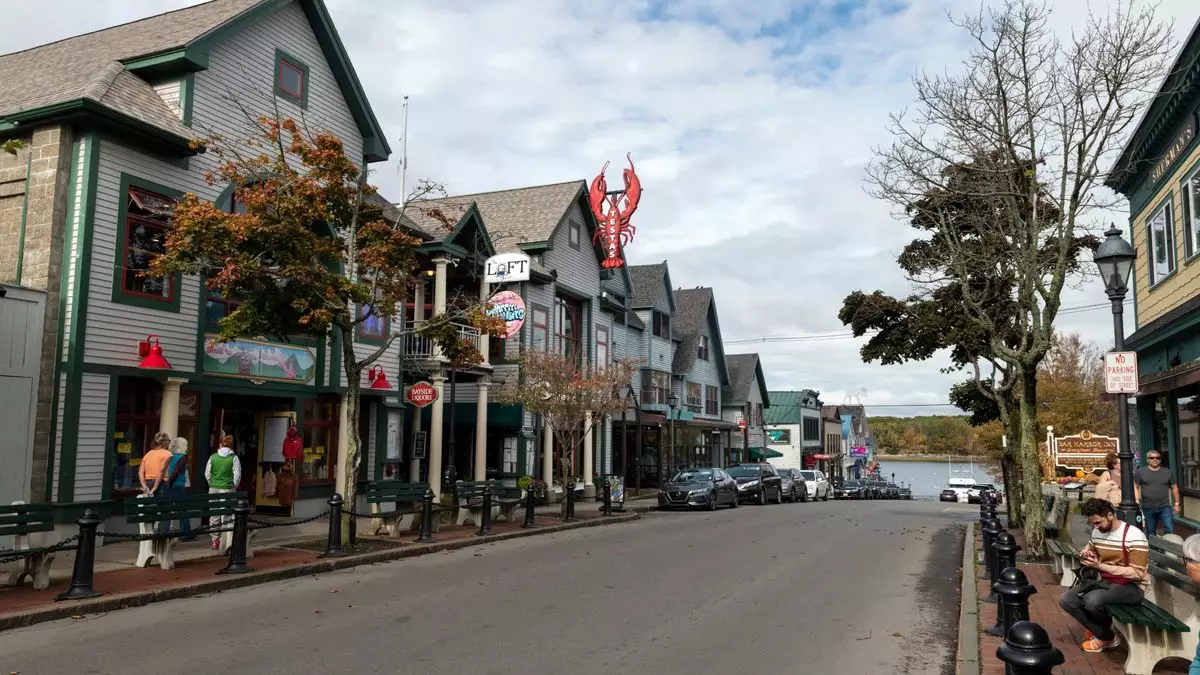The picturesque town of Bar Harbor, Maine, faces a critical turning point as the local electorate prepares for a vote in November regarding the future of cruise ship passenger limits. The issue at hand revolves around a controversial 1,000-passenger cap on cruise visitors which was enacted by the community in a referendum two years ago. This policy, while aimed at preserving the town’s charm and mitigating the challenges posed by mass tourism, has incited fierce debate among residents and business owners alike. If the community opts for repeal, a new upper limit of 3,200 passengers, established through a recent ordinance, awaits implementation.
Historically, Bar Harbor utilized a flexible approach in managing cruise passenger numbers, with varying limits throughout the seasons. For instance, the summer months allowed for a substantial influx of up to 5,500 passengers in specific months, while the rest of the year saw a controlled influx during the shoulder seasons. The imposition of the 1,000-passenger cap represented a significant shift, effectively barring larger vessels associated with major cruise lines from docking, which has prompted significant pushback from the business community that relies heavily on the tourism sector.
The 1,000-passenger limit, initially designed to address concerns regarding overcrowding and strained local resources, became embroiled in legal disputes almost immediately after its approval. Local businesses reliant on cruise tourism filed lawsuits against the cap, arguing that it would severely impact their livelihoods. Though a U.S. District Court ruled in favor of maintaining the cap this past March, the decision did not considerably diminish cruise activity – largely due to advanced bookings by large cruise lines made prior to the cap’s introduction. This situation has created a conundrum for Bar Harbor, where residents are divided between preserving their community’s character and supporting a vital economic sector.
The upcoming vote carries significant implications not just for the town’s economy but also for its identity. Large cruise ships can draw upwards of 250,000 visitors annually, with projections suggesting that the strict cap could reduce this influx by as much as half. The potential repeal of the limit opens the door for ships such as Norwegian Cruise Line’s vessels and Royal Caribbean’s offerings, which have already scheduled visits through 2029, further complicating the negotiations between maintaining community standards and fostering economic growth.
Residents of Bar Harbor find themselves at an impasse, wrestling with divergent views on both crowd management and tourism’s role in their community. Those advocating for a repeal emphasize the economic benefits and job preservation linked to increased cruise activity, while others warn of the risk of losing the town’s charm under an onslaught of visitors. This clash reflects a broader narrative in tourist destinations worldwide, where the push and pull between economic necessity and community desire creates tension over sustainable tourism practices.
Bar Harbor’s upcoming vote is set to not only dictate the shoreside landscape of this vibrant maritime community but also serve as a microcosm of the larger discussions surrounding tourism management in scenic locales. As voters prepare to make a pregnant decision with long-standing ramifications, it is clear that the balance between commerce and community welfare remains a compelling narrative at the forefront of Bar Harbor’s future.


Napsat komentář